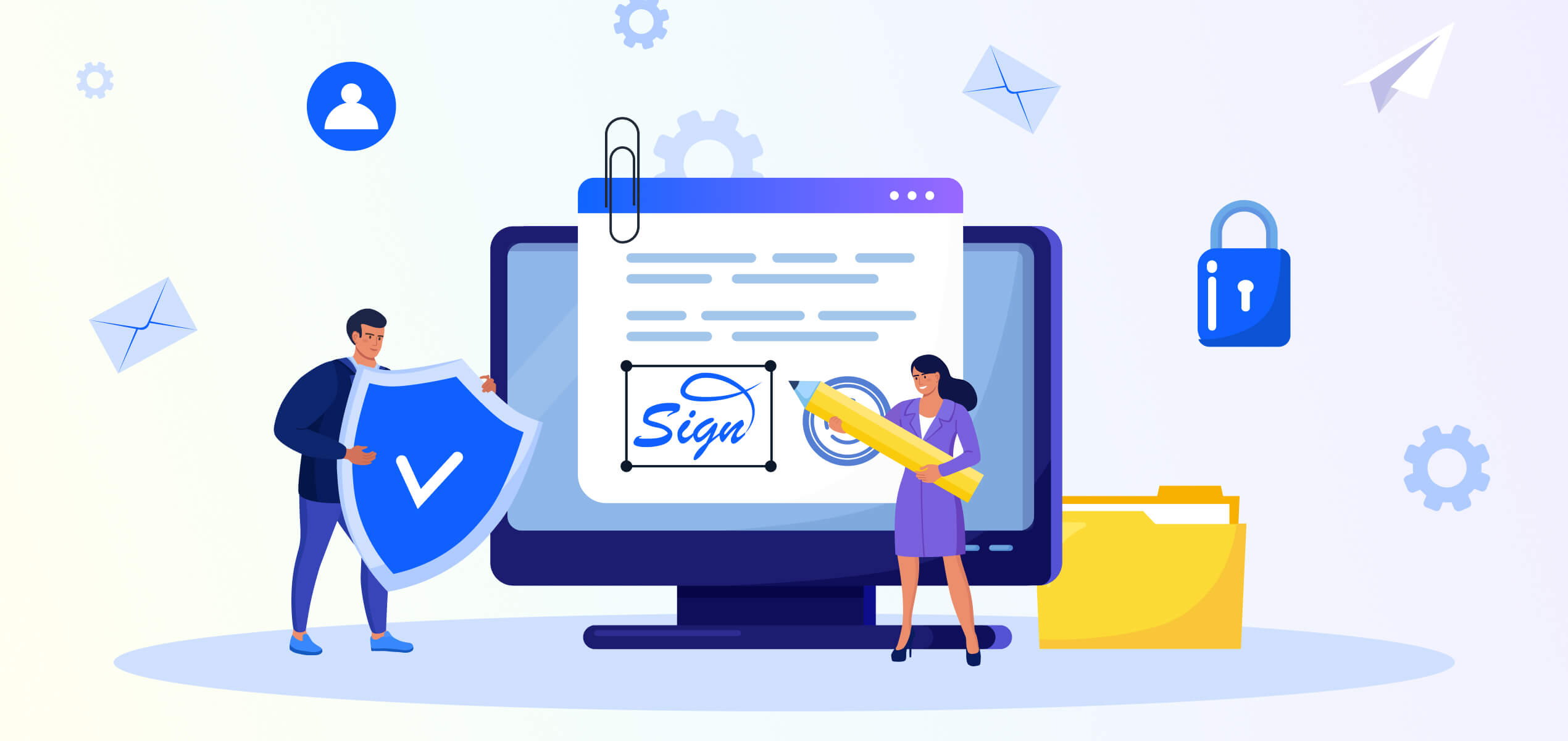The manufacturing supply chain, with its numerous agreements, purchase orders, compliance documents, and logistical paperwork, is a complex web that requires seamless coordination among stakeholders.
Traditional methods of managing these documents are not only time-consuming but also prone to errors and security risks. Enter digital signatures, a game-changing solution for modernizing supply chain documentation.
If you are in the manufacturing industry, and are looking for solutions to streamline signed paperwork in a secure way, you’ve reached the right place. We also take you through actionable steps on integrating a digital signature workflow into your manufacturing business.
The Role of Digital Signatures in Supply Chain Management
Digital signatures are electronic equivalents of handwritten signatures, it is a digital representation of your signature that can be used to sign documents electronically. Your e sign carries the same legal weight as a traditional handwritten signature, thanks to laws like the ESIGN Act in the United States and eIDAS regulation in the European Union.
This is because e-signartures leverage encryption technology to authenticate documents. But this is possible only when using a digital signature software / e-signature platform.
Unlike scanned or electronic signatures, digital signature platforms provide a higher level of security by ensuring the integrity, authenticity, and non-repudiation of the signed document.
For the manufacturing supply chain, digital signatures could mean multiple benefits:
- Streamlined Processes: Eliminating the need for printing, signing, scanning, and mailing physical documents.
- Enhanced Security: Advanced encryption ensures that document signatures cannot be forged or altered.
- Improved Compliance: Digital signatures meet legal and regulatory requirements in most jurisdictions, around the world.
What is the flow of a digital signature?
It begins with the sender uploading or creating a document on an e-signature platform and marking the required fields for signatures or inputs. The recipient’s contact details are added, and the document is sent via a secure link.
Upon receiving it, the recipient reviews the document and applies their signature by drawing, typing, or using a pre-saved signature directly through the software – no need to print, or scan.
To ensure security, identity verification methods like OTPs or digital certificates are used.
Once signed, the document is finalized with a tamper-evident seal and distributed to all parties while being securely stored. Additionally, a detailed audit trail is generated, logging who signed, when, and where, ensuring compliance and transparency throughout the process.
Simple and efficient right? Can you imagine the countless applications for this in your manufacturing workflow? Here’s some inspo for you.
Key Applications of Digital Signatures in Manufacturing
Take a moment to imagine digital signatures in your daily workflow, and watch how it increases document turnaround time, saves you money, and makes your documents so much more secure.
- Supplier Agreements: Onboard suppliers faster and keep operations running smoothly by finalizing contracts with suppliers completely online.
- Purchase Orders and Invoices: Automate signatures for purchase orders and invoices to speed up processing, improving cash flow and overall efficiency.
- Compliance Documentation: Manage compliance documents like safety certifications and environmental audits faster with digital signatures, ensuring they’re accurate and submitted on time.
- Shipping and Logistics: Use digital signatures to confirm deliveries, approve shipments, and handle customs paperwork.
- Internal Approvals: Sign off on budgets, designs, or production schedules with digital signatures, boost accountability and help your teams make decisions quickly.
How to Integrate Digital Signature Workflows for Your Manufacturing Documentation
Implementing digital signatures in your supply chain workflows is simpler than you might think. Here’s how to get started:
- Choose a Digital Signature Solution: First, you have to select a reputable digital signature platform that meets your specific needs. Digital signatures are not legal and enforceable unless you are using a signature platform that has all the relevant legal and industry compliances. Popular options include FlexiSign, DocuSign, Adobe Sign, and HelloSign.
- Integrate with Existing Systems: To maximize efficiency, integrate the digital signature solution with your enterprise resource planning (ERP), document management, or supply chain management systems. This integration allows seamless access to documents and automates workflows.
- Customize Workflows: Tailor your document signing process to fit your supply chain requirements. For example, you can set up multi-party approvals for contracts or automatic notifications for pending signatures.
- Train Your Team: Educate employees and partners on how to use digital signature tools effectively. Provide training materials and support to ensure smooth adoption across the organization.
- Monitor and Optimize: Regularly review the performance of your digital signature processes. Use analytics to identify bottlenecks and continuously refine your workflows for better results.
You’ve picked your Digital Signature platform, what now?
All your documentation can now be managed seamlessly through this e-signature platform.
Here’s what you can do:
- Upload and organize documents, templates in different folders on the platform
- Send and receive contracts, agreements, and invoices directly through the platform for signatures.
- Use your pre-saved signatures for fast and easy signing.
- Get instant notifications when documents are signed and received.
- Automatically organize all your signed documents for easy access and tracking
Cut the Paper Chase
Digital signatures are shaking up the manufacturing supply chain, turning clunky paperwork into a slick, fast, and secure process
In an industry where precision and reliability are non-negotiable, digital signatures can help you stay ahead of the curve. Embrace the tech now, and watch your operations get smarter, faster, and more connected. Check out FlexiSign’s free trial right here.
FAQs: Digital Signatures in Manufacturing Supply Chain
Digital signatures streamline the entire documentation process, speeding up supplier agreements, purchase orders, compliance docs, and more. They save time, reduce errors, enhance security, and improve overall efficiency.
Digital signatures are secure, legally binding electronic versions of handwritten signatures. They use encryption to ensure the authenticity and integrity of documents.
Start by choosing a reliable e-signature solution, easily upload, send, organize, and store documents. You’ll receive instant notifications when documents are signed, and all your signed docs will be automatically organized for easy access and tracking. No more paper clutter!




